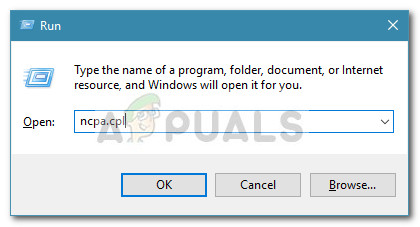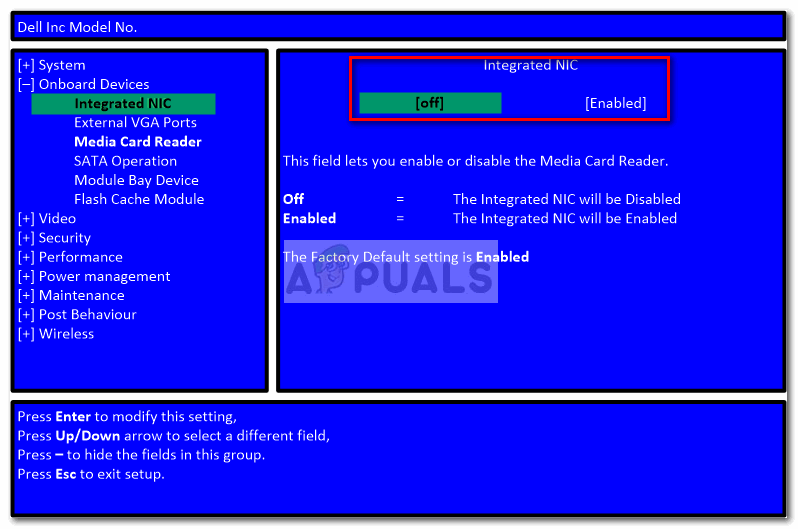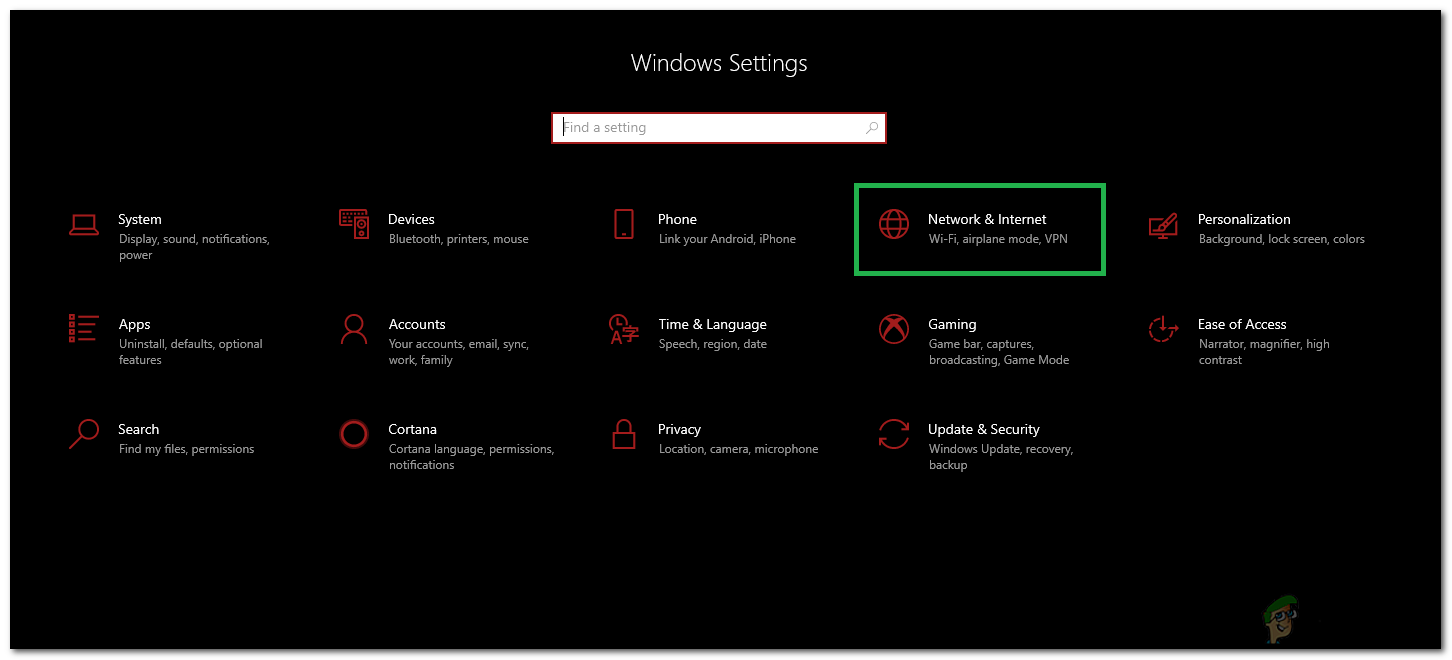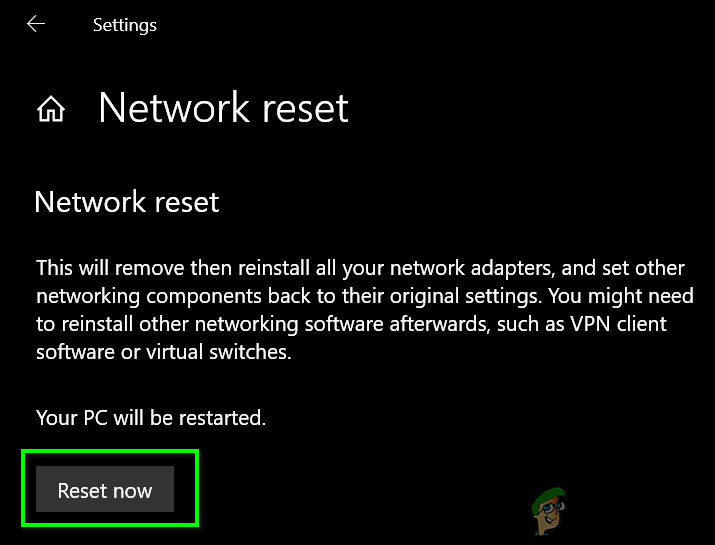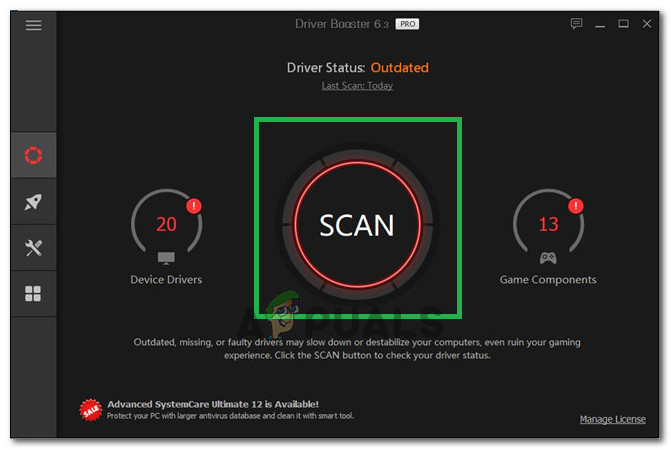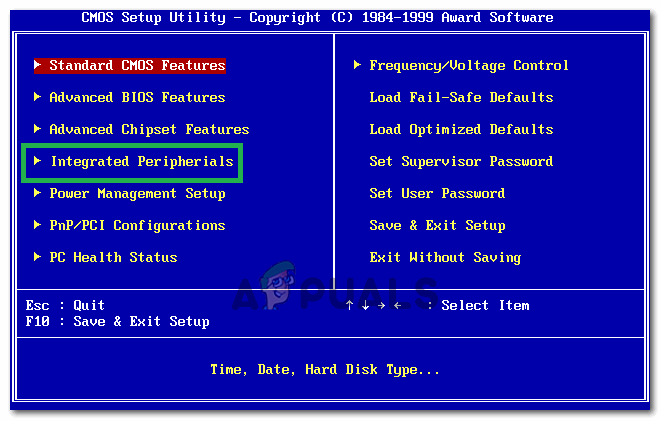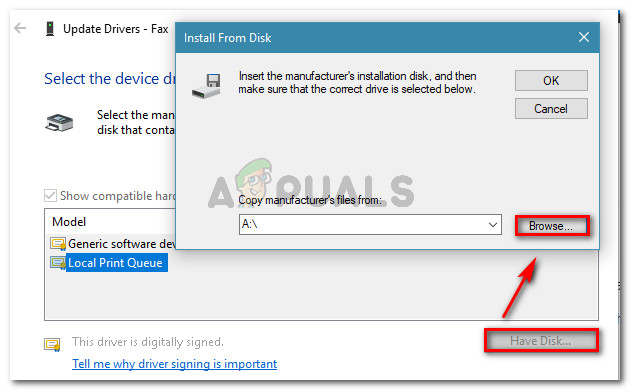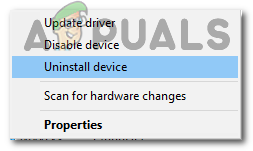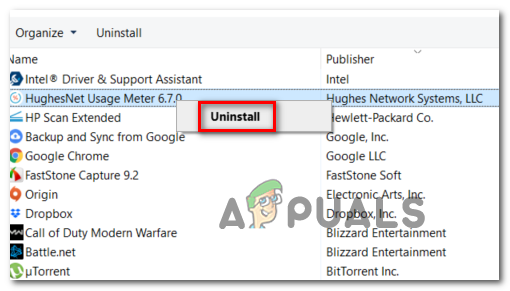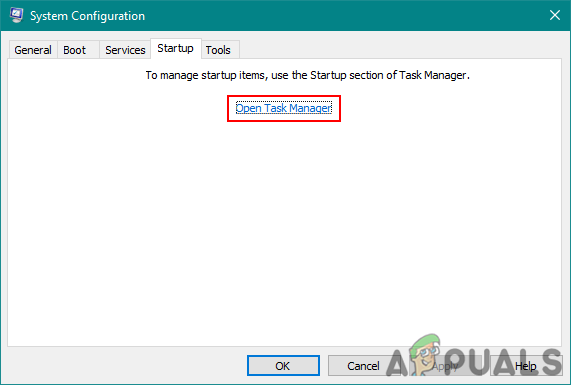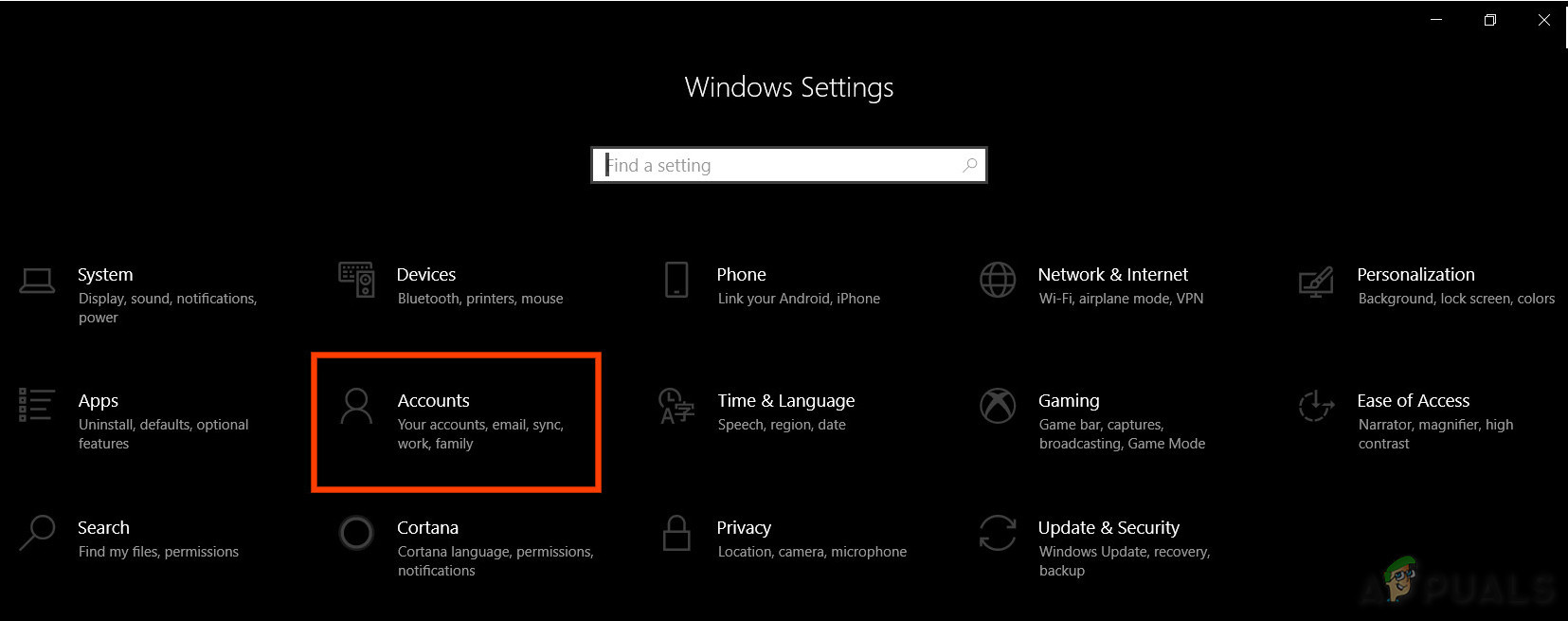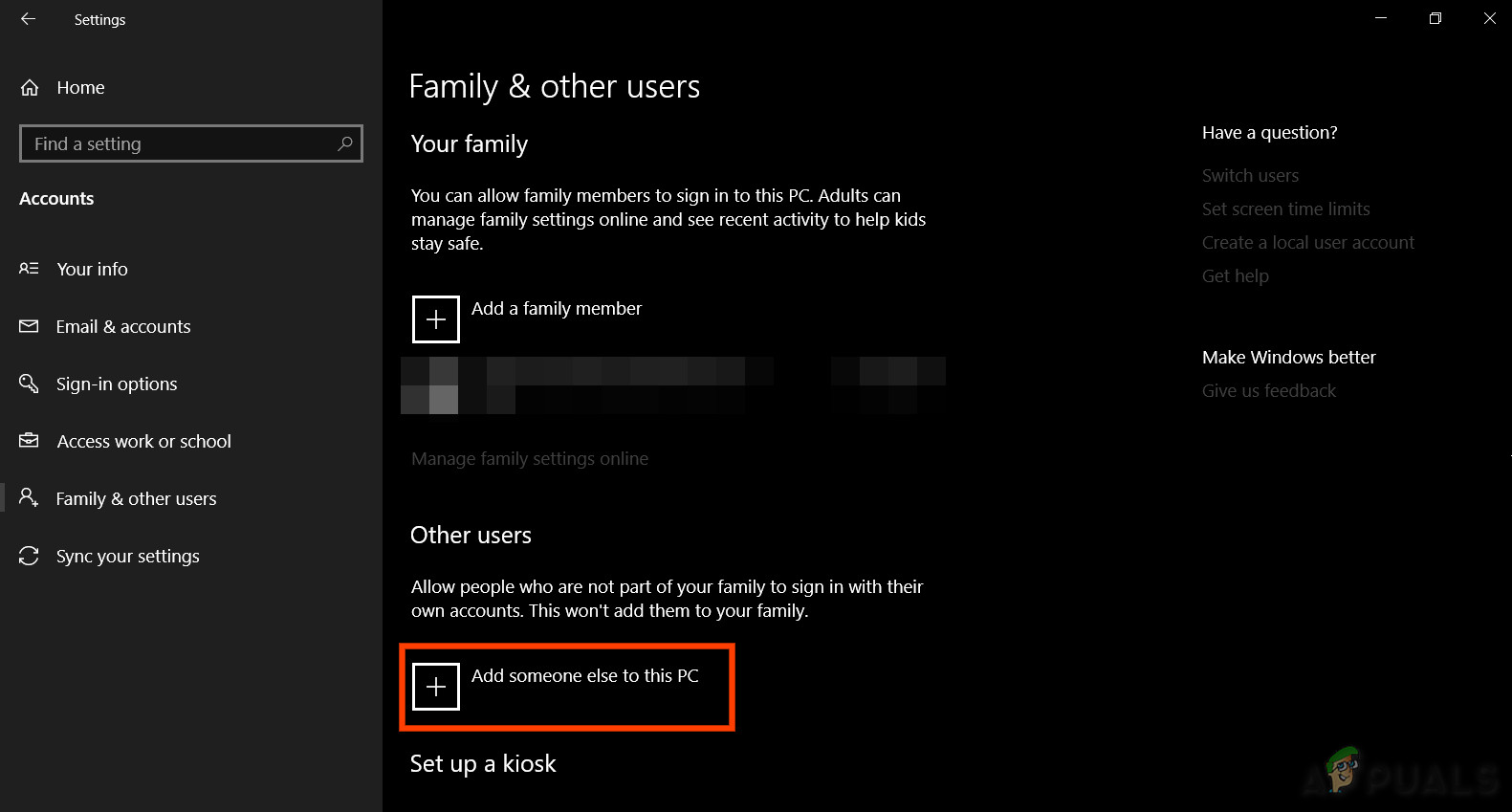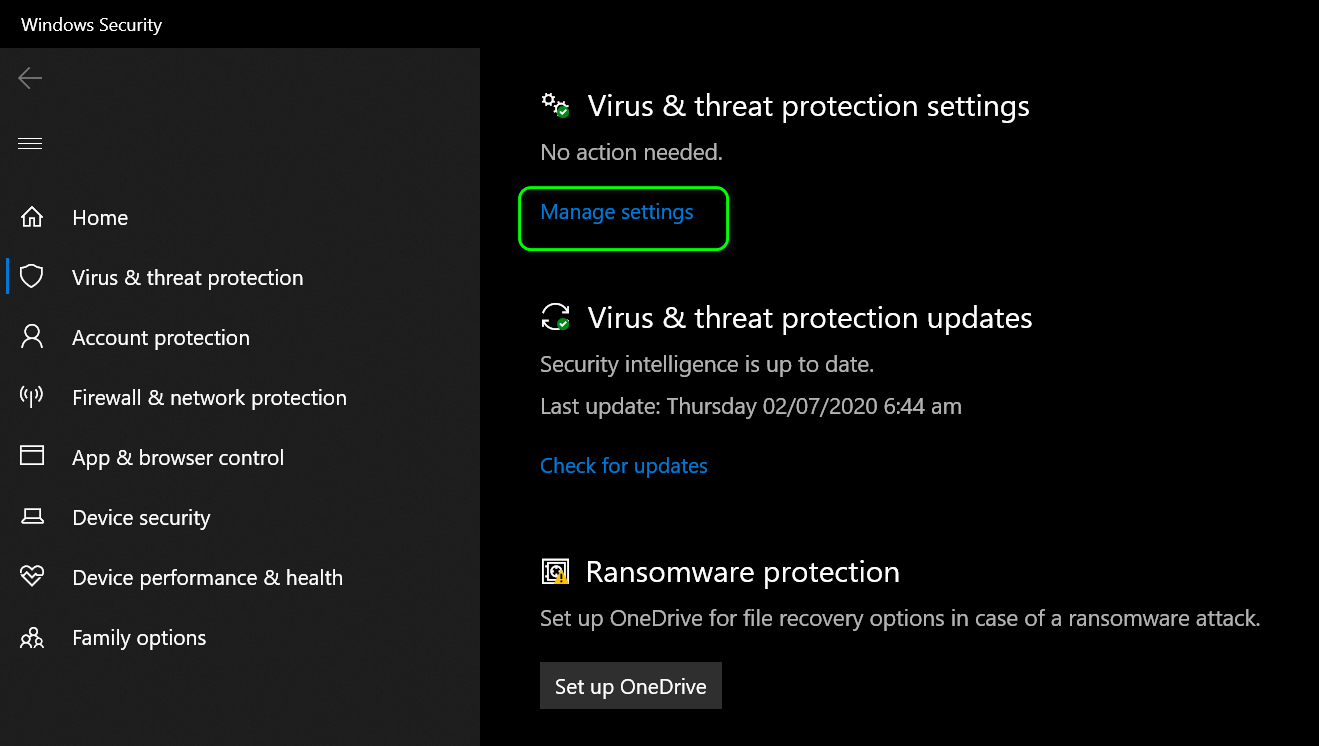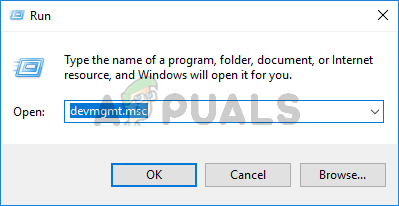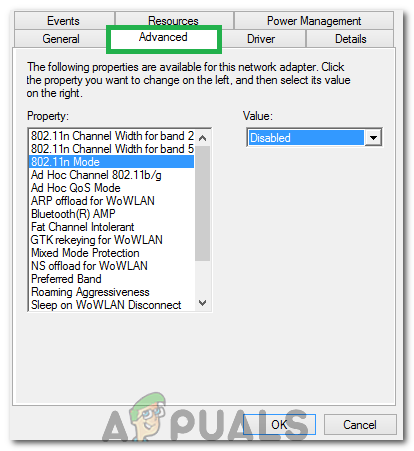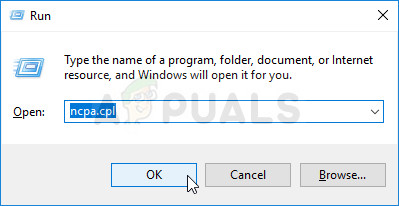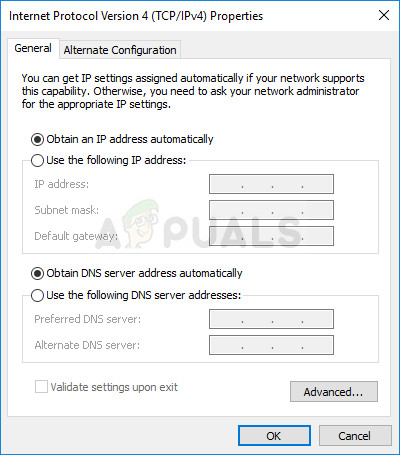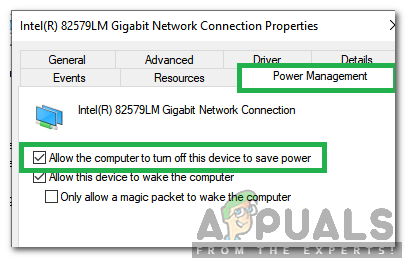This particular issue seems to mainly occur with users that have recently made the upgrade from an older Windows version to Windows 10 and there have been cases where Realtek Network Adapters haven’t been detected either so it isn’t specific only to Gigabit Adapters. Most users affected by this issue have reported that the problem can be fixed by restarting the computer. However, this fix is only temporary, as the same issue can return in a matter of minutes after the next startup. If you’re currently struggling with this error, the methods below will most likely help you to resolve the problem and restore your internet connection. The fixes below are confirmed to be working by users who found themselves in a similar situation. Please follow the methods below in order until you find a fix that manages to solve your problem.
Method 1: Manually installing the updated Ethernet adapter driver
As it turns out, the upgrading to Windows 10 process is not as smooth as advertised and in some cases, it doesn’t detect your Network Adapter. It seems like the upgrading wizard is failing to install the proper ethernet adapter driver for the NIC that you’re using – hence the internet connectivity problems. However, some users that are using the Broadcom Netlink Gigabit Ethernet adapter driver have managed to get around this problem by installing the proper driver themselves. Here’s a quick guide on how to do this: If this method hasn’t managed to help you resolve the constant interrupting of your network connection, move down to Method 2.
Method 2: Using a dedicated NIC
Keep in mind that you might be experiencing this problem if your machine’s onboard internet controller is not compatible with Windows 10. If you burned through all the methods above without a result, your only hope is to try out a dedicated NIC (network interface card) and see whether it’s capable of handling your network connection. If you don’t have a dedicated NIC laying around in the house, you can order one online. This one (here) only costs around $12 and is compatible with all the recent Windows versions (including Windows 10). Just keep in mind that before you install the dedicated network interface card, you’ll need to enter your BIOS settings and disable the onboard Broadcom Netlink Gigabit Ethernet controller. On most motherboards, you will be able to disable the integrated network interface card under Onboard Devices (or a similar name). Once the onboard NIC has been disabled, install the new dedicated network interface card in a free PCIe slot, connect your network LAN cable and reboot your computer again. At the initial startup screen, it will appear like you don’t have internet, but don’t worry. Once Windows 10 loads up fully the operating system will find it and install the driver for it. After a while, you will have a working network connection.
Method 3: Running the Network Troubleshooter
In some cases, the adapter might just be facing some glitches in its configuration. Running the Network Troubleshooter can sometimes fix this sort of glitches. In order to run it, we will have to execute the program from the Control Panel. For that:
Method 4: Reset Network Settings
In some cases, the Network settings that you have configured your computer to use on your computer might actually be the reason that this error is being triggered on your computer. It is possible that the DNS cache or some other network configurations are corrupted or misconfigured to the point that the driver stops working. Therefore, in this step, we will be performing a complete reset of network settings. For that:
Method 5: Update Broadcom Network Drivers using Third-Party App
Sometimes, the matter at hand isn’t as easy as downloading the latest driver from the website and installing it on your computer. There are different pieces of hardware on your computer and one of them might not be comfortable with you running the latest available adapter. So in this step, we will be installing the most compatible driver on our computer using a third-party installer. Driver Booster is a professional driver finder, downloader, and updater, so you can use this software to find all the outdated, missing, and erroneous drivers for your desktop or laptop to make sure all the hardware run normally. If your desktop or laptop has no network, you can use the network failure tool to fix it at first.
Method 6: Enable Ethernet Adapter Through BIOS
By default, the Ethernet adapter should already be enabled on your computer. If the Windows operating system is reporting that your Ethernet is not working then you can try re-enabling the adapter from within your computer’s BIOS.
Method 7: Install 802.11n Driver
Broadcom 802.11n Network Adapter Driver is an important driver package that might actually be the solution to all of your issues because this driver is the most stable one out there. Most of the users reported that they were able to resolve this issue by upgrading their Ethernet driver to the 802.11n one that is available on the official manufacturer website. Therefore, follow the steps listed below to install it on your computer. Note: From the Broadcom site, select the 32- or 64-bit driver library, depending on whether you’re running a 32 or 64-bit machine. Download the file. It will be saved as a compressed zip file, so once it is been downloaded, highlight the file and select Extract from the windows menu and then select “Extract all”. This will uncompress the files. Once this is finished, you should be able to follow the instructions for updating your Broadcom driver.
Method 8: Uninstall the network adapter driver and restart
When you uninstall the network adapter driver and restart the computer, Windows will automatically look for a stored driver from your system and get it installed even if there is no network connectivity. Try to uninstall the network adapter driver, and then restart your computer and let Windows automatically install the latest driver. Here’s how:
Method 9: Diagnose PC in Safe Mode
Safe mode starts Windows in a basic state, using a limited set of files and drivers. If the problem doesn’t happen in safe mode, this means that default settings and basic device drivers aren’t causing the issue. Observing Windows in safe mode enables you to narrow down the source of the problem and can help you troubleshoot problems on your PC. Before you enter the safe mode, you need to enter the Windows Recovery Environment (winRE). To do this, you will repeatedly turn your device OFF, then ON: Now that you are in winRE, you will follow these steps to take you to safe mode: Note: If you need to exit safe mode, simply restart your device, or: After entering the safe mode, check to see if the driver is working, we can diagnose if third-party applications are interfering with the computer in the safe mode and all third-party applications are disabled. Therefore, check if the driver is working, if it is, it means that a third-party app is interfering with your driver. In order to uninstall your applications:
Method 10: Diagnose in Clean Boot
If you are unable to properly diagnose the PC in safe mode, a clean boot might actually be the thing that you require. A clean boot starts Windows with a minimal set of drivers and startup programs so that you can determine whether a background program is interfering with your network driver or program. These steps might look complicated at first glance, but following them in order, step-by-step, will help you get you back on track.
Method 11: Create A New Account
In some situations, a corrupted user profile might also be causing this issue on your computer, therefore, it is sometimes recommended to try and create a new user account and check if the new user profile is able to work correctly with the drivers. This however, comes with two choices, the choice to create a new microsoft account and the choice to create a local account. You can choose which one suits you better and implement that by following the guide below.
Creating A Microsoft Account:
Create a local account:
Method 12: Turn OFF Antivirus Protection
In some cases, it is possible that the Firewall or the Antivirus software that you are using on your computer might be preventing the driver from functioning properly and it might be interfering with important Windows components. Therefore, in this step, we will first be disabling the Firewall and then we will disable the Windows Defender Antivirus. For that:
Method 13: Install Network Driver In Compatibility Mode
In some cases, the driver that you are trying to install on your computer might not be properly compatible with it or its setup might not be properly compatible with the system. Therefore, in this step, we will be installing this driver in the compatibility mode to try and emulate an evironment with which it is fully compatible. In order to do this, follow the guide below.
Method 14: Reset Network Stack
It is possible that the network stack protocls on your computer might have been misconfigured or they might have been corrupted due to which the driver isn’t being recognized by the system properly. It is also possible that they have acquired some corrupted cache which is preventing proper functioning. Therefore, in this step, we will be resetting the Network Stack. For that: Do not worry if the commands after being executed show a particular error message or any other info on the screen because these commands affect the virtual and the physical adapters installed on the computer and sometimes some of the adapters might not respond well to the commands due to which they might not have an effect on all adapters.
Method 15: Tweak Registry Editor Settings
It is possible in some cases, that the registry of your computer has been misconfigured and there are some changes that have to be made before we can get it back working again. Therefoire, in thsi step, we will be tweaking some registry settings which should get the driver back up and working again. In order to make these changes, follow the guide below.
Method 16: Update Intel Chipset Drivers
Chipset drivers play an important role in controlling communications between many components in your system. This issue may be triggered on your system due to outdated chipset drivers because they are not only responsible for slowing down your system’s performance but they also cause networking issues. There are 2 major ways to update chipset drivers. You can update chipset drivers automatically in Device Manager or download and install them manually from its official website.
Update Chipset Drivers Automatically in Device Manager:
The first and simplest method to update chipset drivers is to use the Device Manager. Here’s how to do that:
Update Chipset Drivers Manually:
You can download the motherboard drivers from their official website and install it on your computer manually. To do so, you need to check the computer’s system information firstly. It is important to download the right chipset driver that is suitable for your Windows system, whether it’s Windows 10, 32- bit or 64-bit version, etc. For that:
Method 17: Update Network Adapter From CD Installer
In some cases, it is possible that the correct network adapter for your motherboard has been already included in the CD that came with the motherboard that you are using. Therefore, in order to fix this issue with the Network adapter, you might have to use the CD to install it on your computer. For that:
Method 18: Decrease Your network adapter’s power output
The network adapter allows the device to communicate over the local area network (LAN), connecting to the internet or to other computers. Some computer geeks reported that they were able to get around this problem by reducing the power output of their network adapter, therefore, follow the steps throughout to get rid of this problem:
Method 19: Enable QoS Feature
You might be able to solve this problem by enabling the QoS feature. This feature is in charge of limiting your network speed, but a couple of users reported that the issue was resolved after enabling QoS on their router. To do this, you need to open your router’s configuration page and enable QoS. We have to mention that QoS is an advanced feature, so it might require some configuration before you can properly use it. It’s also worth noting that this feature might not be available on your router, so be sure to check your router’s instruction manual for more information. In order to enable it:
Method 20: Disable Virtual Ethernet Devices
If you haven’t found a solution yet and are still receiving Ethernet port error then you should try to remove any virtual Ethernet drivers on your PC as these can cause major issues with how your PC connects to the internet. A virtual Ethernet driver could be anything from a VPN to software designed to improve ping or packet loss. You can find virtual Ethernet devices and disable them by following the steps below.
Method 21: Uninstall Recent Windows Update
Other times, you may lose network connectivity or experience related networking issues on Windows 10 if your computer receives a buggy update through Windows Update. In this situation, you can uninstall the update to fix the problem until Microsoft releases a new update that permanently fixes the problem. Once you complete the steps, Windows 10 will roll back to the previous build when there was no Wi-Fi or Ethernet adapter problem. After uninstalling the update, the system shouldn’t install the same update until the next quality update becomes available through Windows Update.
Method 22: Monitor Your Connection Details
In some cases, the connection details might not have been entered properly in the network configuration settings. Therefore, in this step, we will make sure that the adapter is set to acquire these settings automatically and that it is actually able to get the correct settings from the connection. In order to do this, follow the guide below.
Method 23: Check Compatibility
Method 24: Change Power Settings
In some cases, it is possible that the computer might be configured in such a way that the Power settings are able to disable the adapter at any point to prevent high power usage and this setting can prevent the adapter from being able to function altogether in some cases because the system always focuses on conserving power. Therefore, in this step, we will be disabling this feature, for that:
Fix: Broadcom Netxtreme 57xx Gigabit ControllerHow to Fix ‘Discord Stops Working in Game’ Error on Windows?SOLVED: Internet Explorer 11 Stops Working Because of iertutil.dllIntel And Broadcom WiFi Adapters Not Working On Windows 10 1903, Acknowledges…
